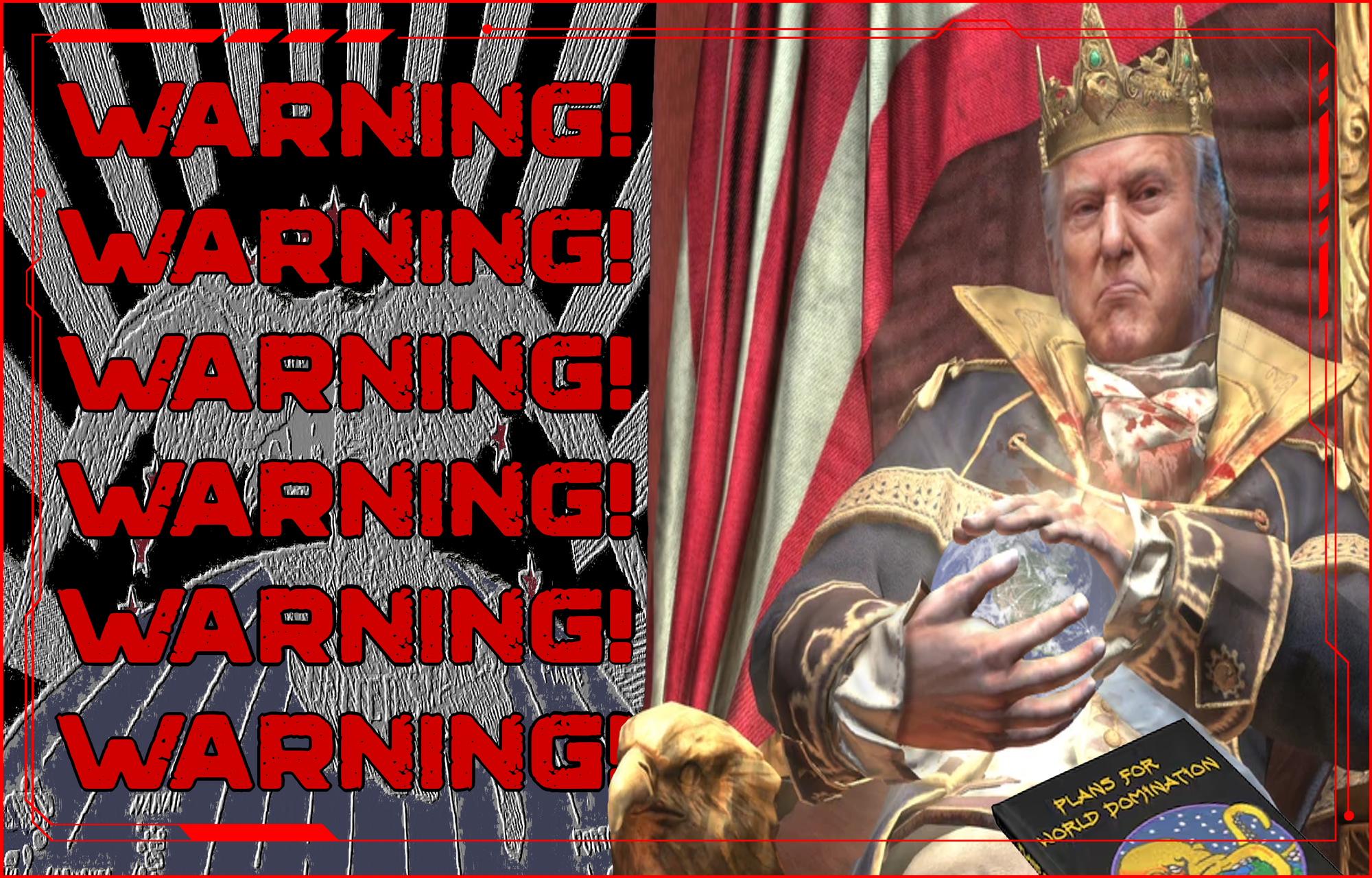"Never waste the opportunity offered by a good crisis." - Niccolo Machiavelli
"Never let a good crisis go to waste." - Winston Churchill

This expose' will make you angry. Some will be angry because of the information, others will be livid because of whose seeing this information.
President Eisenhower's call to action for our awareness is long overdue.
All Americans alive today have forgotten what its like not to live under emergency rule. Since 1933, protections and procedures guaranteed by the Constitution have, in varying degrees, been abridged by Executive directives whose legality rests on the continued existence of Presidentially proclaimed states of emergency.
The power of the president to issue executive orders is not specifically granted only during times of crisis; it exists at all times as part of the executive authority vested in the president under Article II of the US Constitution.
The Constitution does not explicitly mention executive orders, but they derive from the president's interpreted duty to "take Care that the Laws be faithfully executed" (Article II, Section 3) and their general executive power (Article II, Section 1).
Executive orders are often abused more prominently during crises with the justification of addressing situations quickly, as they allow the president to direct federal agencies and manage government operations without needing immediate congressional approval. In execution, this has resulted in tyrannical powers wielded by the Executive without an equal balance check to temper it, especially as it concerns the topic of silver.
The cause was Congress having delegated its great power of making the laws to the President during times of crises, who has in turn delegated these awesome powers to others and through a complicated web akin to an imperial government has created the Military Industrial Complex (MIC).
The current iteration of the MIC exists because Americans have condoned living in fear and have accepted every emergency that has been invoked. Its this same acceptance of fear that is currently, and for a long time has been manipulating, via gaslighting, the silver market to maintain supply for industrial use.
American and allied industries today are the MIC, whether they know it or not. Resources of strategic importance are controlled and prioritize to companies with government contracts. This is all legally orchestrated, violating the rules of law, free of liability, under the simplistic justification of ensuring national security.
Although the erosion of American freedoms are a sickening topic, there is a silver lining of hope.
Silver is the most essential strategic resource. Its been necessary to suppress its price while in use as money. Its is now mandatory to control the public sentiment to be able to prioritize the supply of it. Although more rare than gold, it remains accessibly-priced to suppress investor sentiment.

The current iteration of the MIC cannot exist without access to silver and everyone (globally) has the ability to hoard it--off the market. If this happens, then the proverbial jig will be up.
Flight or Destruction
On March 6, 1933, President Roosevelt declared an emergency to address the banking crisis during the Great Depression. The authority was invoked under the Trade with the Enemy Act of 1917 (TWEA). This was a WW1-era law allowing the president to regulate financial transactions during National emergencies.
At the time, widespread bank runs and failures had wiped out savings and paralyzed the US economy. Silver was the money in circulation. The President created a four-day nationwide "bank holiday", closing all banks to prevent further withdrawals and stabilize the financial system. The public was refused access to their silver.
Follow-up legislation from Congress quickly ratified President Roosevelt's actions with the Emergency Banking Act (March 9, 1933) which focused on stabilizing the banking system by authorizing the federal government to regulate banks, provide emergency funding, and allow the Treasury to inspect banks before they could reopen, this had the effect of consolidating the American banking sector.
Less than a month later, President Roosevelt would issue his infamous EO 6102 (April 5, 1933), which required individuals and institutions to surrender most gold coins, bullion and certificates to the Federal Reserve in exchange for paper currency. This EO again invoked the authority of the TWEA. This would pave the way for the Gold Reserve Act of 1934, which nationalized gold holdings and effectively ended the gold standard for US currency.
Looking to diversify your portfolio with tangible assets? Jim Cook at Investment Rarities offers expertly curated asset investments with their extremely dedicated team. Discover unique opportunities often overlooked by traditional markets. Visit InvestmentRarities.com Today!
Over a year later, President Roosevelt issued lesser known EO 6814 (August 9, 1934), which required the surrendering of all silver situated in the continental US by any and all persons, under the authority of the Silver Purchase Act of 1934, which under the President's judgement was necessary for the policy to be effective.
The Silver Purchase Act declared it US policy to increase the proportion of silver to gold in the nation's monetary stocks, with the goal of having silver constitute one-fourth of the monetary value of those stocks. According to period documents, this policy's actual intended purpose was to control the supply of silver and stabilize price.
This was apart of furthering the purposes of the Resolution unanimously adopted on July 20, 1933 at the meeting of Sub-Commission II (Permanent Measures) of the Monetary and Financial Commission of the Monetary and Economic Conference in London.
The Resolution recommended to all the Government parties of the Conference that they should substitute silver coins for low-value paper currency in so far as the budgetary and local conditions of each country would permit.

Communication in 1934 from the Secretary of State to the Consul General of Shanghai, the US clarified its silver policy. There was real fear that the price of silver would rise above the value of coins at the time, which would cause "flight or destruction" of coins to redeem their silver content. It was in the best interests of the US and its allies to suppress the price of silver which would otherwise be "excessively high".

Even in 1934, there was great concerns that the public would hoard because of silver's true value being 'excessively high'. The need was based on the fear of not having enough money in circulation to facilitate commerce (e.g., the money to transact). Although new industrial usages were starting to emerge at this time that made use of silver in great quantity as a consumable commodity for the first time; the preparations of WW2.
Military Industrial Complex Direct Role in Silver Manipulation
The United States was preparing for War, whether knowingly or unknowingly. Silver's superior conductivity made it critical for electrical components in wartime industries during World War 2.
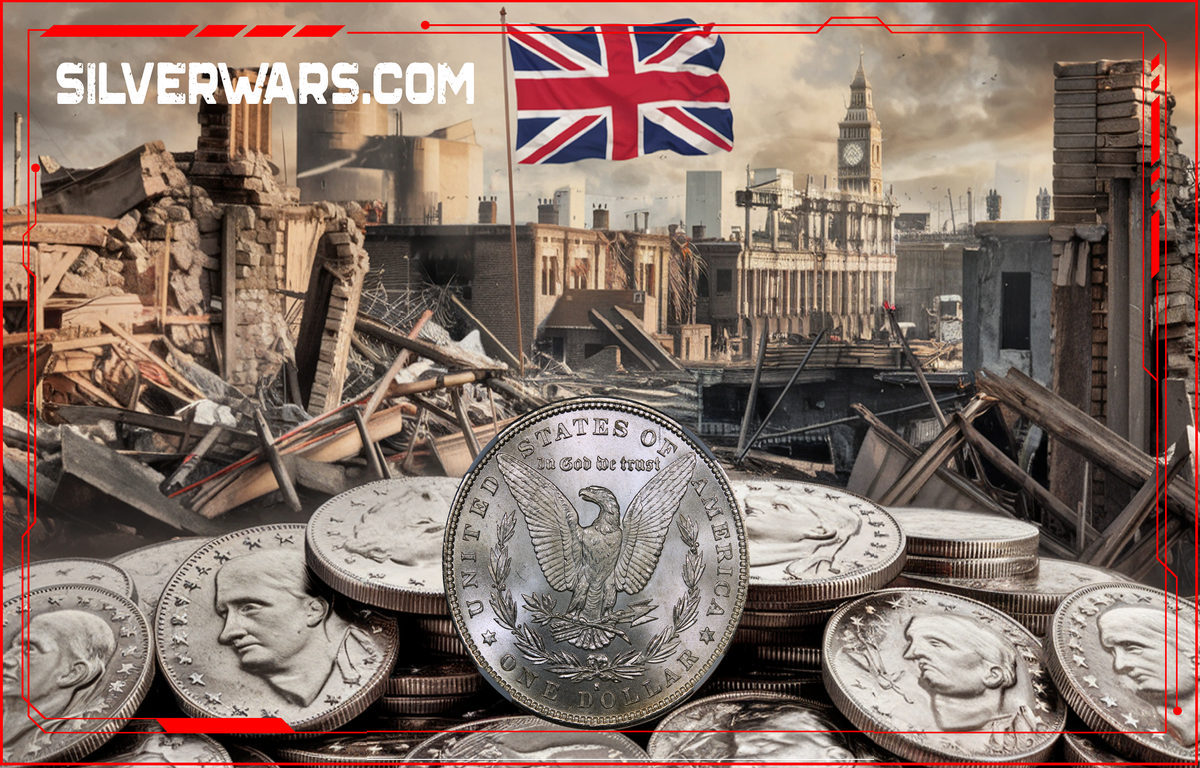
The Silver Purchase Act played a pivotal role in authorizing the government to purchase silver "for other purposes" and release it to defense contractors. During WW2, the Treasury loaned over 1.1 billion troy ounces of silver for electrical and munition production.

Several EOs allowed the President Roosevelt to control silver's supply and price. These EO were revoked after the war ended.
EO 9024 (January 16, 1942) - Established the War Production Board (WPB).
Authority: First War Powers Act (1941) (55 Stat. 838)
-The WPB controlled the allocation of metals, minerals, and industrial materials (including silver) for military production. Silver was prioritized for electrical wiring, switches, and munitions (e.g., silver oxide batteries).
EO 9095 (March 11, 1942) - Create the Office of the Alien Property Custodian (APC).
Authority: Trading with the Enemy Act (1917) (40 Stat. 411)
-The APC seized enemy-owned assets, including strategic materials like silver by Axis powers or collaborators and redirected confiscated resources to the war effort.
EO 9128 (April 13, 1942) - Transferred functions of the Office of Production (OPM) to the War Production Board (WPB).
-Authority: First War Powers Act (1941)
-Centralized control over raw materials, including silver for military use.
EO 9250 (October 3, 1942) - Established the Office of Economic Stabilization and enforced price controls.
-Authority: Emergency Price Control Act (1942) (56 Stat. 23)
-Froze prices of critical materials to prevent wartime inflation, which affected silver markets by stabilizing costs for industrial users.
EO 9347 (May 27, 1943) - Create the Office of War Mobilization (OWM) to coordinate all wartime production.
-Authority: Second War Powers Act (1942) (56 Stat. 176)
-Ensured silver supplies met demands for electronics, radar, and munitions.
EO 8278 (October 15, 1943) - Authorize the Reconstruction Finance Corporation (RFC) to stockpile strategic materials.
-Authority: Reconstruction Finance Corporation Act (1932) (47 Stat. 5)
During the Post-WW2 Transition period, the National Security Act of 1947 was passed. It provided the authority of the President to issue EO 9913 on December 16, 1947. This transferred wartime resource controls to the National Security Resource Board (NSRB), which maintained federal oversight of silver as a strategic material until oversight was transferred to Office of Defense Mobilization.
Lend-Leases were called in. Governments that had borrowed resources from the US to defend themselves during WW2 were asked to repay their debts. Britain and India (a colony of Great Britain) took silver from their monetary supply to repay the borrowed silver to America. This resulted in Britain completely removing silver in 1947 from their money supply in favor of cupro-nickel alternative.
Killing is Good for Business; Bad for Silver
The Defense Production Act (DPA) was signed into law by President Truman on September 8, 1950, during the early stages of the Korean War (1950-1953) and amid heightened Cold War tensions. Its most significant authorities are often tied to or more easily invoked during emergencies due to the act's purpose and structure.

[Oversimplified Cold War Explained Part 1 & Part 2]
The Korean war required rapid mobilization of US military and industrial resources. The DPA was enacted to ensure the production and allocation of materials (e.g. silver) needed for military equipment, such as tanks, aircraft, and munitions. The Korean War increased the industrial demand for silver, used in electronics, photography, batteries, brazing, solder and wiring. The US maintained a large silver reserve stockpile, and the Treasury occasionally intervened to stabilize prices. The Treasury sold silver from its reserves when prices rose too high, capping upward movements.
The US faced shortages of critical materials due to the wartime demand, and the DPA aimed to prioritize defense needs over civilian production. Additionally, the geopolitical context of the Cold War necessitated a strong defense industrial base to counter the Soviet Union. The DPA was justified as a tool to maintain industrial readiness for potential large-scale conflicts, ensuring the US could sustain prolonged military engagements.
While not required, a declared national emergency (e.g. under the NEA) often facilitates DPA use by providing political and legal justification, mobilizing resources, and aligning with other emergency powers.
Most DPA powers are available at any time, as long as they support national defense, defined broadly in 50 U.S.C. § 4552(14) to include military needs, homeland security, critical infrastructure, and emergency preparedness. However, a national emergency can unlock additional flexibility, funding, or coordination mechanisms, effectively amplifying certain powers.
The declared emergency provides political cover, reducing pushback from companies and Congress when redirecting private sector resources. Think of the Defense Production Act as the legislative authority, and Executive Orders as the hands that guide.
Industry Trumps Money
The industrial usage of silver continued to consume the available supply until the world faced a global shortage in the 1960s. Prompting Congress to pass the Coinage Act of 1965, which removed the silver content from dimes and quarters and severed the link between the intrinsic value of coins and their face value for Americans. Coins became fiat currency, deriving value from government decree alone.

However, the amount of silver "freed" from no longer minting quarters and dimes would prove to not be enough. By 1969, the US citing industry again as the problem, removed the silver content from half-dollars and dollar coins, terminating silver's use as a monetary metal completely.
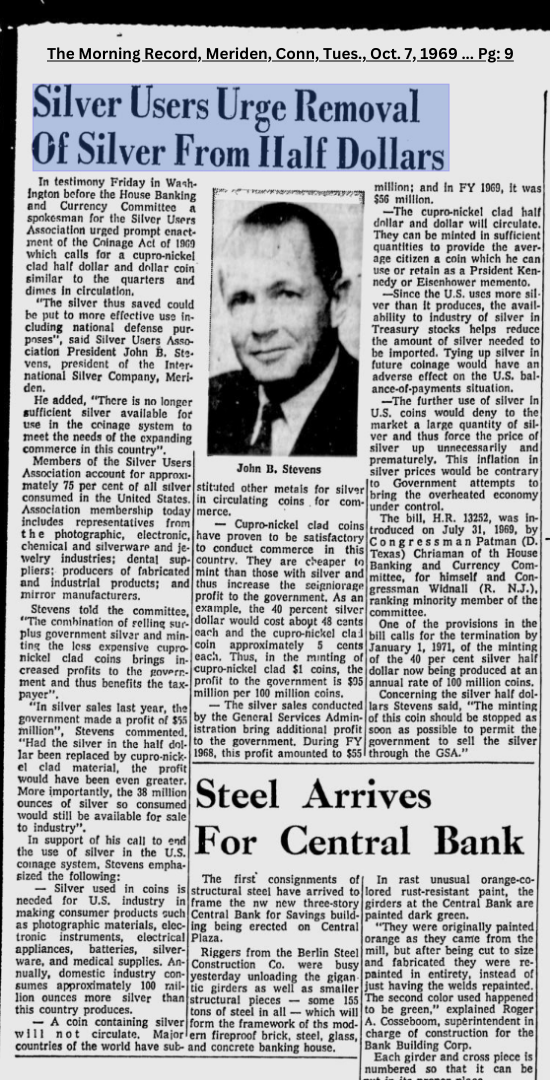
The removal of gold and silver from US money, remains in direct opposition to Article I, Section 10 which mandates their use. However, the DPA during an emergency gives the authority to violate every aspect of the Constitution and unknow to the majority of Americans, there was an active an emergency at the time.

The national emergency, caused by the banking crisis of the Great Depression (1933) was still in effect and invoking the DPA gives ultimate authority, even over the Federal Reserve. The priority of the War Industry, or Military Industrial Complex is that of national security, and gets priority above all else.
Oral testimony from Andrew F. Brimmer, Former Member, Board of Governors of the Federal Reserve System reveals that industries engaged in war production can borrow from the Federal Reserve banks, with the authority of the DPA.


The implications of the FED securing loans for defense companies could be egregious.
Tyranny; By the Pen
Interest in the question of emergency powers started to become a concern politically from the US' experience in the Viet Nam War and the incursion into Cambodia. The President's ability to commit Americans to warfare without any Congressional declaration of a state of war disturbed many Senators in the early 1970s.
In 1971, Senator Charles Mathias, Jr. of Maryland submitted Senate Concurrent Resolution 27 to establish a special joint committee to study the effect of terminating the emergency known to be in existence at the time, that which was declared by President Truman in 1950 during the Korean War.
The Senate Special Committee on National Emergencies and Delegated Emergency Powers (1973-76) found that the US has been in a near constant state of emergency since 1933 and in addition to the national emergency declared by Truman on December 16, 1950, three other declarations of emergency remained in force at the time:
- Franklin Roosevelt, March 9, 1933, to cope with the current banking crisis.
- Richard Nixon, March 23, 1970, to deal with the Post Office strike.
- Richard Nixon, August 15, 1971, to implement currency restrictions and to enforce controls on foreign trade.
The same committee also found a problem with Executive orders that still exists today, in that it's all about terminology in what legal effect is and is not public.
Executive Orders (EOs) and Presidential Proclamations are formally defined under the Federal Register Act (44 U.S.C §§ 1505); however, other presidential directives--such as presidential memoranda, determinations, letters, or findings--lack a statutory definition. These can have the same legal effect as EOs but are not consistently labeled or published, creating a terminological gray area. The overlap blurs the line between what must be published and what can be kept discreet.
Emergency authority intended for use in crisis situations has been available to the Executive branch for nearly a century (92 years). The President has had extraordinary powers--powers to seize property and commodities, seize control of transportation and communications, organize and control the means of production, assign military forces abroad, and restrict travel.
The abhorrent state of affairs is the direct result of Congress' failure to establish effective means for the handling of emergencies and its willingness to defer to Executive branch leadership. In the face of the wars, emergencies, and crises, the Congress, through its own actions has transferred awesome magnitudes of power to the Executive without ever examining the cumulative effect of that delegation of responsibility. It tolerates and condones Executive initiatives without fulfilling its own constitutional responsibilities. It has in important respects permitted the Executive branch to draft and in large measure to make the law.
This has occurred despite the constitutional responsibility conferred on Congress by Act I, Section 8 of the Constitution which states that it is Congress that "makes all Laws..."
Emergencies allow for a tyrannical executive branch to overstep the intended democratic process. Congress' has the ability to end the emergencies, but not without huge challenge.
The NEA requires Congress to meet every six months while an emergency is in effect to "consider a vote" on a joint resolution to terminate the emergency. This is referred to as a Periodic Congressional Review, as described in 50 U.S.C. § 1622(c). There is no mandate to require an actual vote, making it a weak tool unless Congress actively pursues termination.
The joint resolution process is subject to a presidential veto, which can make termination even more difficult if the President is committed to maintaining the emergency powers. Overriding the Presidential veto would require a supermajority.
This path, although available politically, is objectively the most improbable option to succeed currently given the requirement of a supermajority.
Perpetual Emergencies
The United States has been in a continuous state of emergency since November 14, 1979, when President Jimmy Carter declared a national emergency in response to the Iran hostage crisis. This declaration, which involved blocking Iranian government property, has been renewed annually by every subsequent president.

As of April 2025, 49 national emergencies are currently active, with 41 having expired out of a total of 90 declared since the 1976 National Emergencies Act. Recent declarations, such as those by President Donald Trump on January 20, 2025, for energy and the US-Mexico border, add to this ongoing state.
As of today, May 5, 2025, the US has been under at least one active national emergency for 45 years, 5 months, and 21 days (or roughly 16,609 days).
In the last 92 years, the US has only had 13 months that lacked a national emergency between September 14, 1978 to when President Carter declared a national emergency on November 14, 1979.
This perpetual emergency state, was further empowered the Executive branch by the National Emergencies Act, which granted the executive access to over 100 special powers, often without sufficient congressional oversight, raising concerns about the normalization of emergency governance.
Due to provisions within the new laws, existing declared emergencies that were not terminated in the past were effectively ended after a delayed 2 year grace period on September 14, 1978.
The US public has been under nearly constant emergency rule since 1933, undermining the democratic checks and balances established by the Constitution, as the executive branch can indefinitely extend these powers, often citing reasons unrelated to the original crisis, like using the 9/11 emergency for unrelated military actions, or recent crisis on the Canada-Mexico borders.
The establishment narrative frames these renewals as necessary for national security, but the lack of termination suggests a structure bias towards maintaining executive control, at the expense of constitutional norms.

More disturbingly, if the public was unaware that President Roosevelt's emergency from 1933 was still in effect for 40 years, what else is the public unaware of given that all EOs don't have to be made public?
A Systematic Crisis is Worth All The Silver In The World
After President Carter declared an emergency in 1979, it made all things possible again, even changing the rules on the Hunts.
Andrew Brimmer was the public governor of the Commodity Exchange Inc. (COMEX) during the Hunt Brothers squeeze of silver.
According to his Oral Testimony, he states that the Hunts decided to take physical delivery of the silver, crate it up, put it on an airplane and ship it off to Switzerland, where it was put in a bank vault. When asked "Why Switzerland?" He states in his discussion with Nelson Bunker Hunt, Mr. Brimmer was told: "Because, who knows, the United States might confiscate, may freeze it."
The Hunt brother's concerns were real concerns, because their play also revealed that the actual supply of silver is tiny.

Rules had to be changed to ensure the ruse continued and public investor sentiment "tamped" down. Those that still participate in the COMEX are ignorant or have no intention of taking physical delivery. Most contracts are rolled over, settled for cash, but hardly ever taken for physical delivery.
Delivery from the COMEX is prioritized towards industrial users.

The Hunt Brothers had whether knowingly or unknowingly picked a fight they could not win. Saving the viability of the futures market continues to be a matter of national security.

No one knows for how many ounces of paper silver to physical silver exists. The futures market is what directly controls the price of silver, but it is not based on any real fundamentals of supply and demand. Its design is to gaslight investors regarding supply and prioritize where the actual physical supply of metal goes.
The Hunt Brothers were legally stopped thanks in full to the great powers of the DPA, to protect the national security interests of the United States.

Major Weapons Systems Require Silver
The US weapon arsenal remains largely consistent. Although weapons have been upgraded to take advantage of latest advancements in technology, the overall designs remain largely the same, which means silver.
In 1985, the Air Force Institute of Technology published "The Benefits of Recycling Silver - A Precious Metal", where in the abstract it makes clear that effective deployment of the national defense preparedness program is in jeopardy due to precious metal shortages.
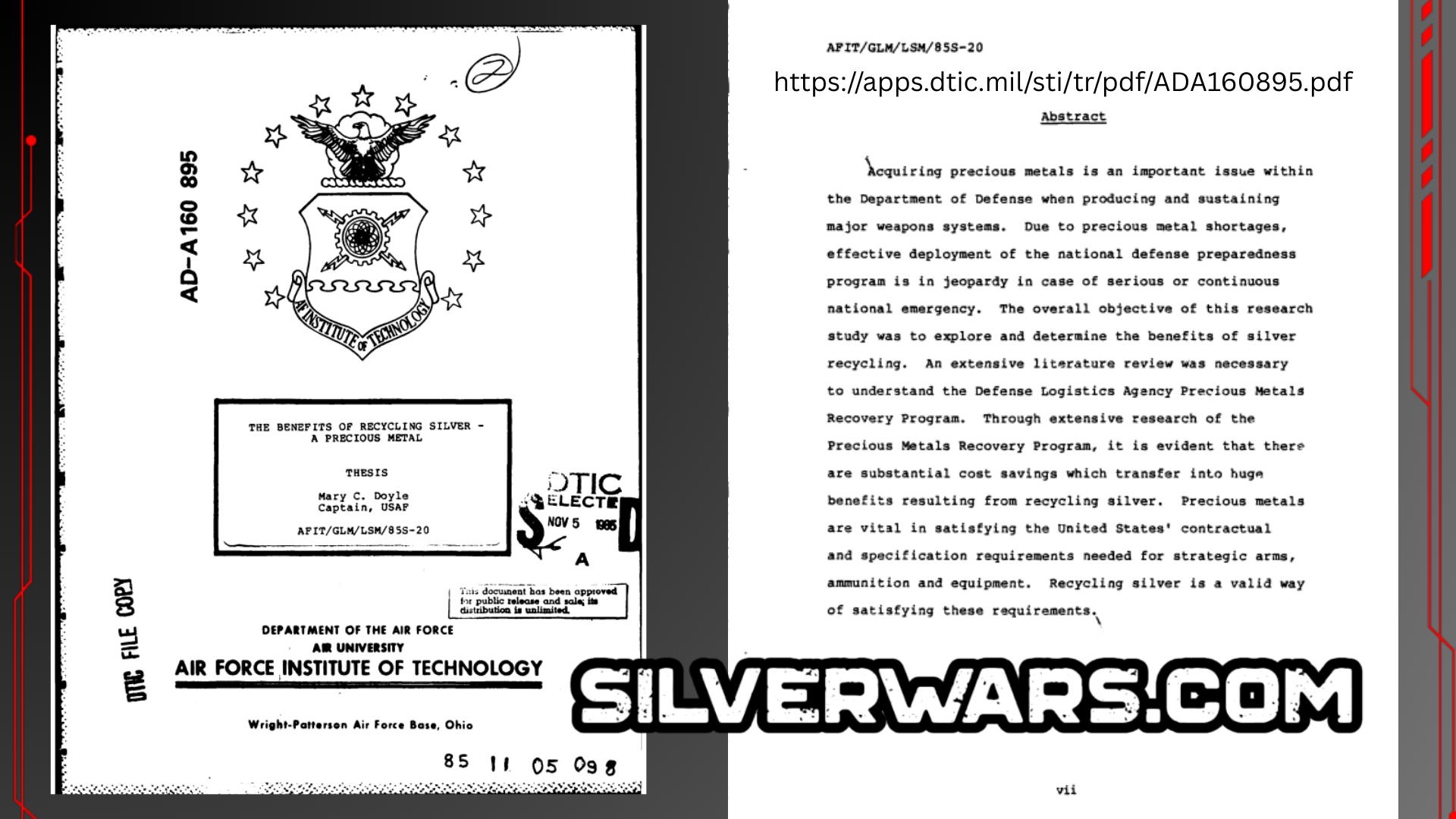
"Precious metals are vital in satisfying the US contractual and specification requirements needed for strategic arms, ammunition and equipment."

This remains true today. The current line up of US missiles, all hinge on the supply of silver.

These munitions are also shared with allies and through an a series of arrangements through the DoD. Many countries participate in sharing raw resources, in order to prioritize them towards national security purposes.
Security of Supply
The Department of Defense (DoD) has entered into arrangements with several nations to ensure the mutual supply of raw materials for industrial purposes. Bilateral Security of Supply Arrangements (SOSA) allow the DoD to request priority delivery for DoD contracts, subcontracts, or orders from companies in these countries. SOSA also allows the signatory nations to request priority delivery for their contracts and orders with US firms.

These agreements help ensure that supply of silver maintained.

The following countries have agreed to take part so they too can share in this benefit of supply when needed for their own national security.
-Australia-Canada-Denmark-Estonia-Finland-Germany-India
-Israel-Italy-Japan-Latvia-Lithuania-Netherlands-Norway
-Korea-Singapore (agreement not public)-Spain-Sweden-United Kingdom
These countries participate in securing the supply of silver as well as facilitating the manipulation.
What Now?
The topic of "Silver Manipulation" has been a long time raging, with a lack of consensus on WHO and HOW and WHY. Its time for the truth to take center stage. Silver is the most essential metal on the planet for the national security and we continue to prove this as a publication, over and over.
The true supply is tiny. The price is manipulated to keep the price controlled. The physical silver is prioritized to industry as a matter of national security. There is no liability to anyone that participates favorably for the manipulation. The erosion of the US Constitution will allow this to continue for as long as there is a Crisis in effect and current legislation exists.
The Military Industrial Complex has grown so powerful that it spans multiple nations. It no longer serves for the protection of the US people, but the protection for a tyrannical system that favors it.
Silver presents an opportunity. The rarest.
This is not investment advice, this is survival advice: Don't get mad. Get even. Take physical delivery of silver. Buy silver. Or just hold on to your existing silver and don't sell it. Hide it.
The Military Industrial Complex created the problem in the silver supply. The market is tiny. It cannot supply the demands of industry now without current physical silver holders selling into the market. The most important aspect above all else is not to sell. Only acceleration will occur if people buy now and hold.
The timetable could be quick, or likely it will get ugly and drawn out. There is no way to know what will happen or any way to project what the true price of silver should be.
Silver is the only resource that could theoretically deplete to a zero supply.
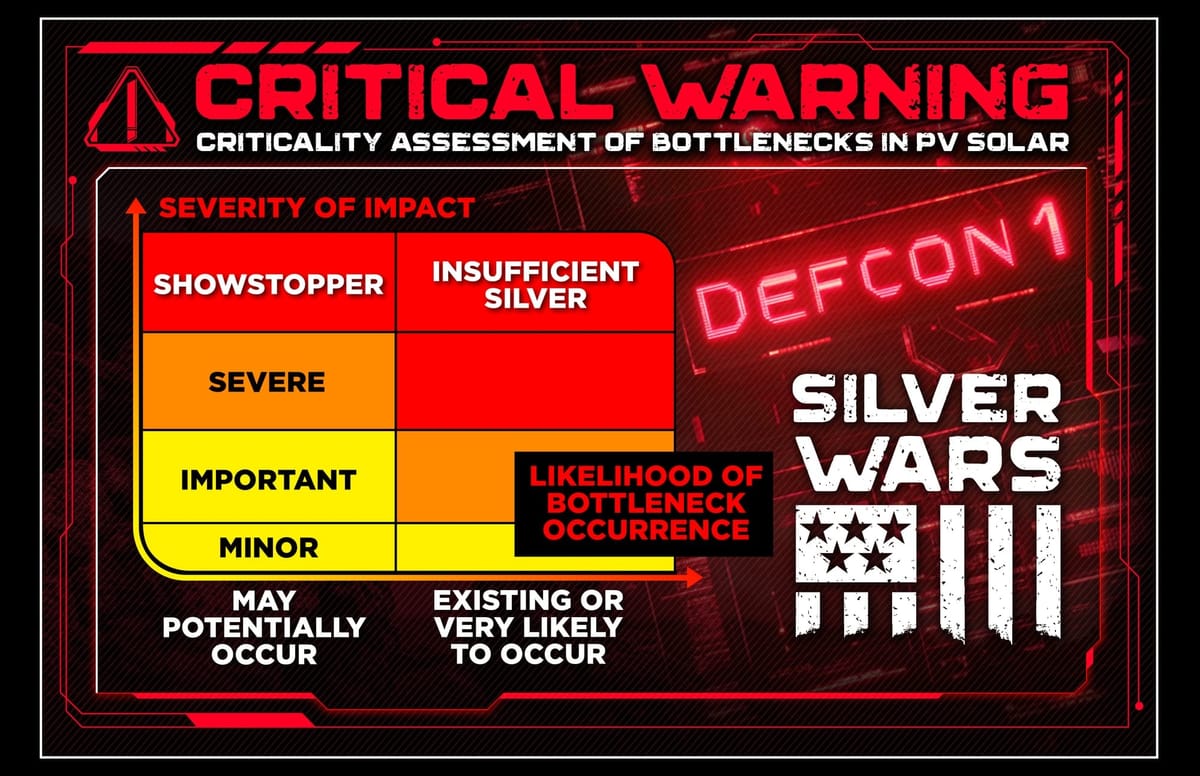
Final Thoughts
The next expose' we do will focus on the last 15 years to show every topic here is still relevant, still happening, and what is happening.
Silver Wars needs your support! We just became an actual threat to the Military Industrial Complex. The information we provided today is of the highest national security concerns.
We know, that they know, that we know. Bessent Friends Forever?
Show support for the importance of the work we do, please consider enlisting your support with a subscription, and or one time donation.
If you're a silver mining company (explorer/producer), you need our expertise! There is no one else available that wants you to be Bonanza Kings. Please reach out for consultations. We know how you can leverage your position.
We The People, with Silver, in Justice for All.

